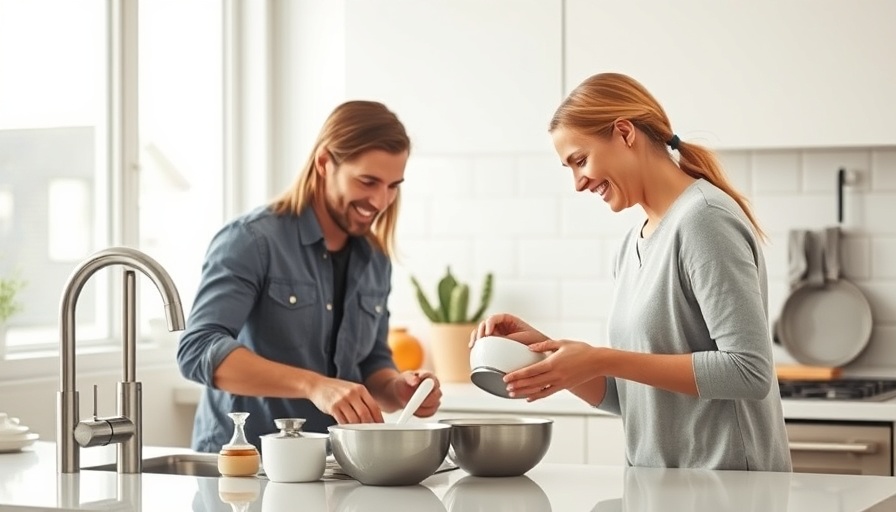
Understanding the Gender Chore Gap: A Deep Dive
The gender chore gap remains a significant concern for many couples, particularly in modern relationships where both partners juggle careers and home responsibilities. Research shows that women still disproportionately handle household chores, which can lead to feelings of burnout and resentment. Relationship experts like Eimear O'Mahony highlight the emotional toll this imbalance takes on individuals and their partnerships. The expectation that women should manage both visible tasks like cleaning and invisible ones such as remembering birthdays adds to their emotional burden, creating a cycle of stress and anxiety.
Breaking Down the Emotional Burden of Household Tasks
For many women, the household management workload extends beyond straightforward chores to encompass emotional labor, such as planning family gatherings and remembering important dates. This often leads to an overwhelming sense of responsibility, which is not always recognized by their partners. The struggle to balance these tasks can create an atmosphere of discontent in relationships, where one partner feels underappreciated and overworked. O'Mahony emphasizes the importance of addressing these feelings directly, suggesting that couples should engage in honest conversations about their individual burdens instead of allowing resentment to fester.
The Strain on Mental Wellbeing
The stress associated with managing an unequal load of chores can contribute to severe mental health issues, such as anxiety and depression. Women frequently find themselves in a state of hyper-vigilance, always aware of what needs to be done next at home. This constant pressure detracts from their ability to enjoy the relationship or to focus on self-care, which is crucial for their wellbeing. Addressing the chore gap is not merely about dividing tasks but also about nurturing the emotional health of both partners.
Strategies to Bridge the Gender Chore Divide
Here are twelve therapist-approved strategies to help couples address and overcome the gender chore gap, allowing for a more equitable distribution of household responsibilities:
- Don’t Expect 50/50: Aim for equitable divisions based on each partner's workload and stress levels, rather than rigidly adhering to a 50% split.
- Open Communication: Start dialogues about feelings of overwhelm and burnout, possibly with the assistance of a couples therapist if needed.
- List the Load: Create a comprehensive list of all household tasks, highlighting both physical chores and mental responsibilities.
- Reassess Tasks: Challenge traditional norms about who should handle what, and delegate based on strengths and preferences.
- Set Up a Schedule: Establish a routine for chores that accommodates each partner's availability and energy levels.
- Share Responsibilities: Engage in shared problem-solving to tackle tasks that are typically handled by one partner.
- Be Flexible: Understand that workloads can fluctuate; adapt responsibilities accordingly without judgment.
- Practice Gratitude: Acknowledge each other’s efforts; appreciation can foster a more supportive atmosphere.
- Educate Together: Read books or attend workshops about equitable home management and emotional labor.
- Seek Professional Help: If issues persist, don’t hesitate to reach out to a counselor for expert guidance.
- Foster Empathy: Try to see each other's perspectives regarding the workload at home.
- Celebrate Success: Mark milestones when tasks are balanced successfully; this reinforces positivity and teamwork.
Moving Towards Equitable Partnerships
Addressing the gender chore gap isn't just beneficial for individual mental health; it also strengthens relationships. Couples who work together to manage household tasks report higher satisfaction and more profound emotional connections. Addressing this issue may seem daunting, but it is fundamentally about creating a supportive environment where both partners feel valued and understood. For many, implementing these strategies can make a significant difference in both their partnership and personal wellbeing.
As women embrace these changes and foster healthier partnerships, it’s essential for them to continue advocating for an equitable sharing of responsibilities. We're all in this together, so let’s take the step toward a balanced and fulfilling life for everyone.
 Add Row
Add Row  Add
Add 




 Add Row
Add Row  Add
Add 

Write A Comment